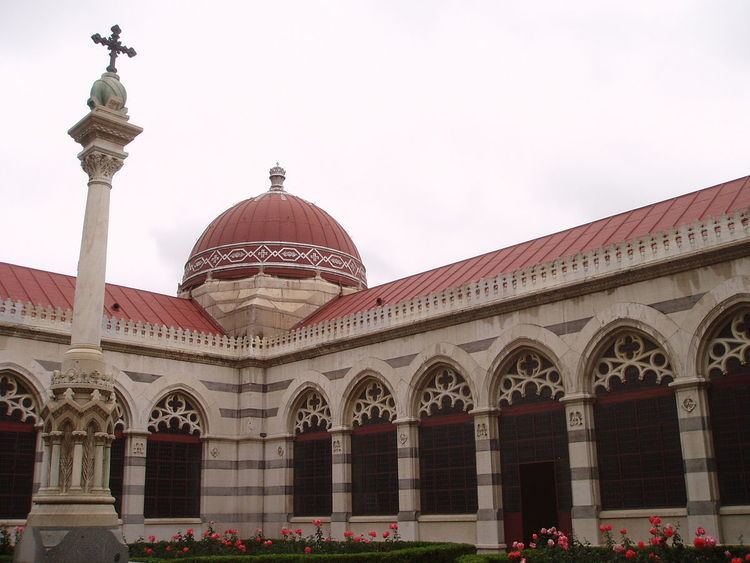Criteria Monument Reference no. RI-51-0007311 Phone +34 914 54 87 00 | Type Non-movable Designated 1992 | |
 | ||
Address Calle Julián Gayarre, 3, 28014 Madrid, Spain Hours Open today · 10AM–2PM, 4–6:30PMWednesday10AM–2PM, 4–6:30PMThursday10AM–2PM, 4–6:30PMFriday10AM–2PM, 4–6:30PMSaturday10AM–2PM, 4–6:30PMSunday10AM–3PMMondayClosedTuesday10AM–2PM, 4–6:30PMSuggest an edit Similar Basilica of Nuestra Señora d, Basilica of San Francisco, Church of San Manuel y, Church of San Andrés, Chapel of Obispo de Madrid | ||
The Pantheon of Illustrious Men (Spanish: Panteón de Hombres Ilustres) is a royal site in Madrid, under the administration of the Patrimonio Nacional. It was designed by Spanish architect Fernando Arbós y Tremanti, and is located in Basilica of Nuestra Señora de Atocha in the Retiro section of Madrid.
Contents
Notable interments
The pantheon houses the tombs of a number of famous Spaniards including:
Notable structures
The site also contains its own version of the statue of Liberty, an 1857 tomb designed by sculptors Federico Aparici, Ponciano Ponzano and Sabino Medina, moved here in 1912.
References
Pantheon of Illustrious Men Wikipedia(Text) CC BY-SA
